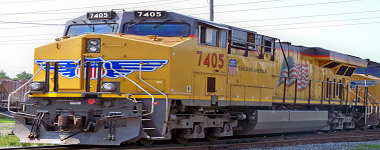Week 52 of 2017 shows same week total rail traffic (from same week one year ago) contracted according to the Association of American Railroads (AAR) traffic data. The economically intuitive sectors remain in expansion, but the decline in the last week of the year negatively affected all the averages.

Analyst Opinion of the Rail Data
We review this data set to understand the economy. If coal and grain are removed from the analysis, this week it declined 8.0 % (meaning that the predictive economic elements worsened year-over-year). The decline likely was due to a holiday mismatch between 2016 and 2017 – and that is why we primarily use rolling averages.
Intermodal transport declined year-over-year this week.
The following graph compares the four week moving averages for the rail economically intuitive sectors (red line) vs. total movements (blue line): Rail’s intuitive sectors have been bouncing around the zero growth line for most of 2017.
This analysis is looking for clues in the rail data to show the direction of economic activity – and is not necessarily looking for clues of profitability of the railroads. The weekly data is fairly noisy, and the best way to view it is to look at the rolling averages (carloads [including coal and grain] and intermodal combined).
A summary of the data from the AAR:










Leave A Comment